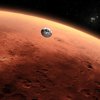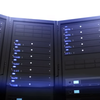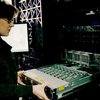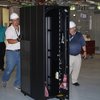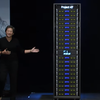Using off-the-shelf servers, NASA and HPE are devising a way to allow a Mars-bound spacecraft to house an on-board supercomputer.
One of the biggest impediments to more widespread use of AI is the lack of developer expertise in machine learning software. Bonsai, a startup based in Berkeley, California, is looking to change that in a big way by offering a platform that abstracts away a lot of the low-level nuts and bolts that makes machine learning such a daunting challenge for businesses.
Flash storage specialist Nimbus Data has announced ExaDrive, an SSD that offers more capacity than any commercial hard disk drive (HDD) available today.
A free online course on the basics of supercomputing will be available on August 28 for anyone who signs up this month.
Episode 188: Addison Snell and Michael Feldman discuss two big announcements out of China.
This week IBM demonstrated software that was able to significantly boost the speed of training deep neural networks, while improving the accuracy of those networks. The software achieved this by dramatically increasing the scalability of these training applications across large number of GPUs.
Oak Ridge National Laboratory has begun to install Summit, the IBM-NVIDIA-powered system that is likely to become the most powerful supercomputer in the world when completed.
CSRA, a system integrator and service company, has installed the second phase of the Biowulf supercomputer at the National Institutes of Health (NIH), more than doubling the systems capacity.
Scientists from the Chinese Academy of Science have run the largest simulation of the universe on TaihuLight, the worlds fastest supercomputer.
AMD has demonstrated a supercomputer based on its latest AMD EPYC CPUs and Radeon Instinct GPUs that can deliver one petaflop of single precision floating point performance in a single rack.
